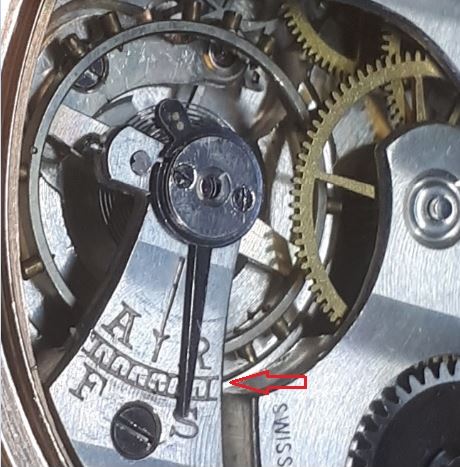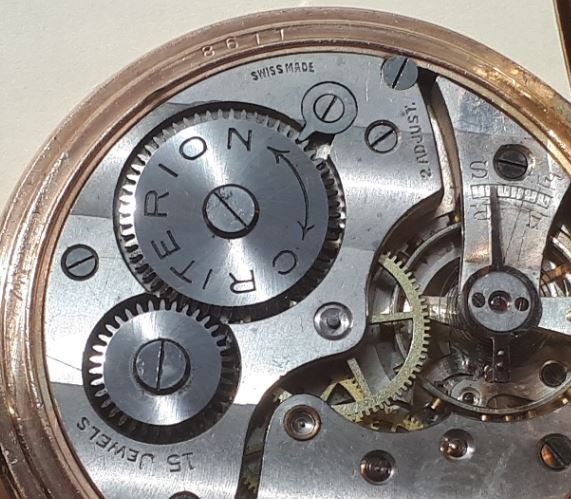Last updated on July 3, 2024
I have a requirement in my collection for my watches to be presentable and reliable. The watches that pass through my collection are bought on the condition that they are accurate to within two to three minutes a day. I always buy my watches from trusted dealers, so I know what I am getting. Typically, if I am wearing an antique watch on a working day or at a social event, I’ll be using the watch for twelve hours at most. Two minutes of accuracy over a day transforms to only one minute over twelve hours, this is perfectly acceptable.
Given this level of accuracy and the fact that I tend to turn over my antique watches fairly regularly, there is not much need for me to regulate the movement. However, recently one of the antique pocket watches in my collection started to show its age and drifted outside of the acceptable accuracy range. It was my Criterion and I noted it was running about two minutes fast over the course of a day. When I first got the watch, it was running less than a minute fast over the course of a day. I will certainly send it for a full service in the not-too-distant future. However, before that, I thought I might try to regulate the movement myself.
Regulator lever
I now take the position of the regulator lever as a consideration when purchasing an antique watch. The more centred the regulator lever is, the ‘room’ you have for regulation. In some instances, you can see antique watches for sale with the regulator lever at its maximum extension in one direction. For example, the image below shows the regulator level nearly fully extended toward the S (Slow). This leaves little room for adjustment if the watch starts running fast. I tend to avoid such watches.
Regulating an antique watch means making it run slightly faster or slower, by making a small adjustment to the effective length of the balance hairspring. The shorter the effective length, the quicker the balance completes its swing and so the watch runs faster. Regulation is achieved by moving the regulator lever. This can be done with a finger or screwdriver tip. I prefer to use a wooden toothpick. It gives more control than a fingertip and being wood won’t scratch the movement if you slip. Another good reason for the toothpick is that being wooden, it cannot carry a magnetic charge which could be transferred to the movement.
Adjustments
A slight adjustment toward the F (or Fast) will speed the watch up, and toward the S (or Slow) will slow it down. After adjustment, let the watch run for a few days to see how much the rate was affected. Higher grade watches utilise a micrometer regulator and afford more fine control via a small screw. These are a bit more difficult to adjust, as the small screwdriver can easily slip. Although I have seen videos online where watches have been regulated whilst running, I prefer to make the adjustment when the watch is fully unwound.
Regulating antique watches within a minute a day should be a straightforward task. After regulating, I managed to slow down my Criterion to less than a minute fast. In addition, remember that the timekeeping is affected by temperature, position (e.g. face up, face down etc.), how much the watch is wound up and other factors. Even if you manage to regulate your timepiece perfectly at the workshop table, the timing may be somewhat different when used in real-world conditions. For example, moving from an airconditioned room outdoors into searing summer temperatures can have an effect on accuracy.
Summary
In summary, there are four main points to consider when regulating an antique watch:
- To make the watch run faster move the regulator to Fast, “F” or “A”, depending on what is displayed on the regulator. To make it run slower move the other way to Slow, “S” or “R”. They stand for ‘Faster Slower’ and the equivalent in French ‘Avance Retard’
- The marks on the regulator are not calibrated, they are just used as a visual reference. Changes to the timing are done by trial and error. Make small adjustments to the lever position and note how much effect this has on timekeeping.
- To avoid confusion, keep a written record of the specific adjustments made. You can simply note how many notches or half notches you have moved the lever. Alternatively, you could photograph the position of the lever after each adjustment.
- Track your timings over several days, but focus on a time period consistent with your normal usage. I typically will wear an antique watch to work or to a social event. As a result, I am only really interested in accuracy over a 12-hour time period.
A list of additional posts regarding antique watches can be found on the Guides page.



Hi, can I pull the lever beyond the scale and the letter “A”? My pocket watch still slow 3 minutes a day.
Hi, 3 minutes is not unacceptable for an antique pocket watch. I would just set the time 3 minutes fast at the beginning of the day. I always have a smartphone in my pocket if I need the precise time. That said, all of the watches in my collection have run +/- 1 minute per day with regulation. However, I do understand your frustration. If the regulator lever is at its full extent and your watch is still running slow, it is time to get it professionally serviced. I hope this helps, thanks for commenting, Jason.